Ancient Ones and the Sixties
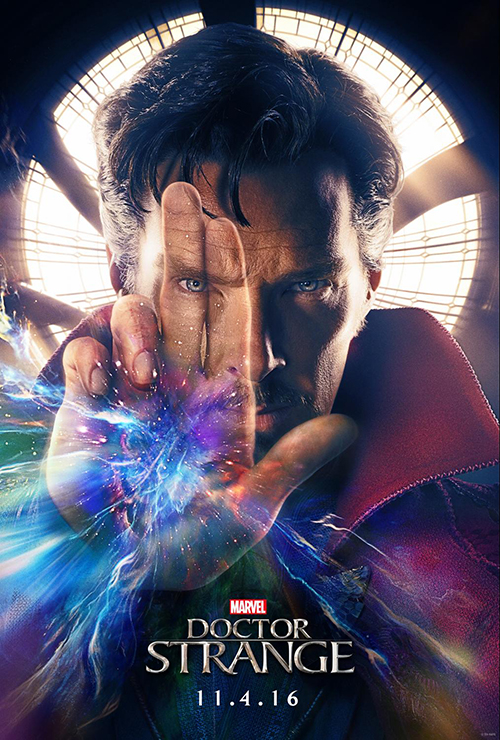
Nineteen sixty-three was not a good year for America. Symptoms of national poor health included war in Vietnam, lynching in the south and the assassination of JFK. Things where not much better across the pond as England rediscovered the serial killer over the year of Moors murders. Is it any wonder then, that creatives on both sides of the Atlantic would fashion fictional doctors to remedy this existential woes? Making his screen debut first, Dr. Who premiered on BBC television that November, first portrayed by English thespian William Hartnell. For those who don't know, the Doctor is a time-traveling extraterrestrial who solves problems with his magic-wand-like sonic screwdriver; his adventures continue to this day.
That summer in New York, 36-year-old comic artist Steve Ditko pitched his latest creation to the still new publishing imprint, Marvel comics. He had already put in a good 10 years as an illustrator, often working for Marvel's predecessor Atlas Comics. More importantly, he was the artist behind Marvel's most iconic hero, The Amazing Spider-Man. Given that comic's success, one would think an editor would be quick to let him add another iconic character to Marvel's growing stable of intellectual property.
But this was not the case. A letter penned by Stan Lee himself hints at a burgeoning acrimony that would effectively define Ditko’s later career. In that letter Lee wrote “Well, we have a new character in the works for Strange Tales (just a 5-page filler named Dr. Strange) Steve Ditko is gonna draw him. It has sort of a black magic theme. The first story is nothing great, but perhaps we can make something of him-- 'twas Steve's idea and I figured we'd give it a chance, although again, we had to rush the first one too much.” That short story saw print on July of 1963 in Strange Tales #110.
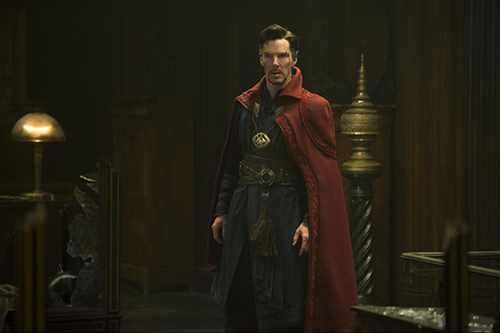
Strange Tales featured stories loosely modeled after the morality tales published by EC comics, minus the sex or gore so as to be compliant with the puritanical Comics Code Authority. Instead Ditko filled his comic pages with surreal landscapes and unique character designs, leaving the increasingly bombastic dialogue to Stan Lee himself. The character’s origin story followed a couple of issues later, predicting the 60’s fascination with Eastern mysticism and the boom of psychedelic counterculture. Despite his relative sobriety, Ditko’s art screamed black-light posters and inadvertently resulted in readers occasionally including a joint with their correspondences. Ditko grew intolerant of Lee’s input and began delivering finished pages instead. By 1966, he stopped creating for Marvel, bringing his visual aesthetic and growing interest in Objectivism to some iconic though obscures characters published by DC comics and others.
Marvel on The Master of Mystic Arts
With a cult following, Doctor Strange continued to be published, written by Marvel's more headshop-friendly writers, with sporadic trippy excesses needing to be reined in by more straight-edged editors. Despite intermittent cancelations, Doctor Strange was a mainstay of the Marvel Universe appearing in his own title, other hero titles and in team books such as The Defenders. Just don't expect Doctor Strange’s appearance in the upcoming Netflix series of the same name.
Doctor Strange has also been on the small screen before. He's made numerous appearance in other Marvel animated programs where he solves magical problems and makes house calls. There was also, a 1978 television movie adaptation of Doctor Strange, a career-dooming role for American actor Peter Hooten. That movie can be found online but should be approached as one would approach any forbidden grimoire - with great reticence. A better choice would be to take a trip to the multiplex and see this new Doctor Strange in 3D. It’s such a visual spectacle that it even begs the splurge on IMAX.
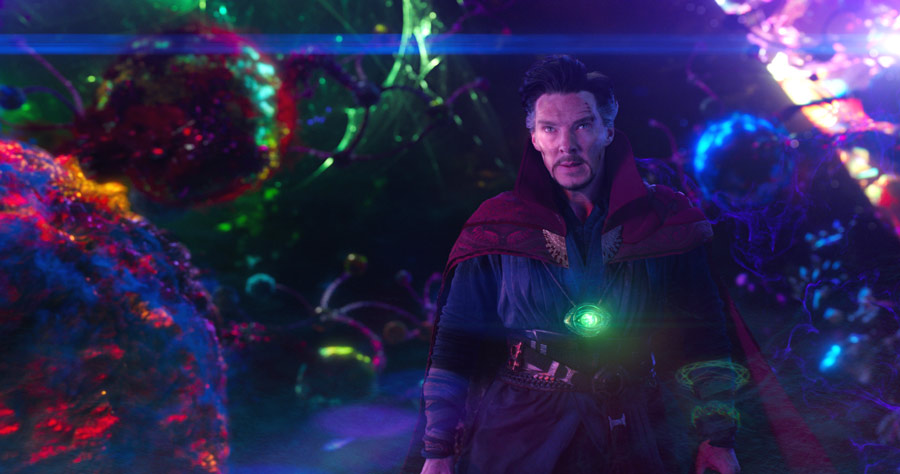
Marvel Studio's formula for alternating sequels with origin stories is proving versatile and effective. It allowed Ant-Man (2015) to fold into Captain America: Civil War (2016), the first of the studio's "phase 3" movies. Beyond a new logo design and opening bumper Marvel's phase 3 includes a new charitable organization, one they've smartly placed right alongside their new brand ambassador, Benedict Cumberbatch.
Benedict Cumberbatch’s Dr. Stephen Strange is positioned to be the next Marvel standard bearer, akin to Robert Downey Jr.’s Tony Stark. Both characters capture the smart-ass arrogant genius, which is not surprising as both actors owned the archetype of such roles, Sherlock Holmes. Cumberbatch’s break-out role was in Sherlock, the Masterpiece Theater miniseries that began in 2010 and promises a fourth season in 2017. And Downey played Sherlock in two major motion pictures in 2009 and 2011, with the third installment in early production. Stark is the egotistical C.E.O. of tech and Strange is the narcissistic master of magic. Their inevitable crossing in the Marvel Cinematic Universe (MCU) is eagerly anticipated.
Doctor Strange opens a gateway to the magical world for the MCU, a gold mine already deeply quarried by Harry Potter and soon to be delved into again with the franchise reboot, Fantastic Beasts and Where to Find Them, opening just two weeks after Doctor Strange. Just as wands choose the wizard and interdimensional travel is through portkeys and the flue network travel in Potter’s world, the relic chooses the sorcerer and sling rings are needed in the MCU. Add this with a hefty dose of psychedelia, Stan Lee is laughing out loud at Huxley’s Doors of Perception as Marvel serves up some munchies for the stoner crowd as well as the magical nerds.
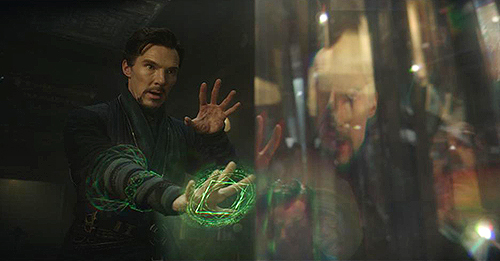
Fight Choreography with Magic Qi Force Blasts
Jonathan Eusebio was Fight Coordinator. Eusebio has been one of Hollywood’s leading choreographers with a long roster of notable combat credits including John Wick (2014), The Wolverine (2013), The Avengers (2012), The Expendables (2010), Haywire (2011), Ninja Assassin (2009) and many more. Like much of Eusebio’s work of late, the fight choreography is significantly enhanced by CGI effects. Doctor Strange takes the anti-gravity CGI fights first seen in Inception (2010) to another dimension, one that must be seen in 3D to be fully appreciated. Armed with magical qi force blades, whips, and fighting fans, the fights are sizzling with sparkling fire balls.
Doctor Strange boasts a heavy martial arts influence. At the San Diego Comic Con, Mads Mikkelsen claimed he drew inspiration for his villainous character Kaecilius from Bruce Lee. Mikkelsen has a background in dance and gymnastics, and appears as Galen Erso in the upcoming Star Wars: Rogue One. It was a pretentious comment from a self-proclaimed lifelong fanboy. Mikkelsen does engage in some magical fight scenes but nothing Little Dragon worthy. But anyone who knows martial arts, knows the veracity of Doctor Strange’s stake in the martial arts comes down to one star – Scott Adkins.
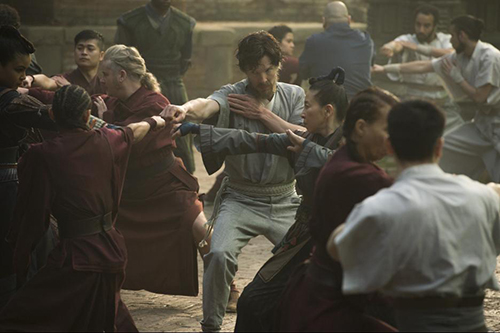
Adkins is one of the top martial arts leading men in the business right now. He has had small roles in films like The Brothers Grimsby (2016), Zero Dark Thirty (2012), The Bourne Ultimatum (2007) and others, but where he really shines is as the leading man in action-driven B movies like Hard Target 2, Close Range (2015), and as Boyka in the Undisputed fight-film franchise (2016, 2010, 2006). Born in the United Kingdom, Adkins began his martial journey at the young age of 10 when he joined a Judo club with his father and brother. He became obsessed with the martial arts, building his own personal Dojo in his family’s garage, complete with an altar to Bruce Lee. Here is a true Bruce Lee fanboy, not someone who just admired him, but was inspired enough to follow the martial path. Four years later, Adkins started Taekwondo, and from there, he explored a wide range of styles like Kickboxing and Karate. He attended the prestigious Webber Douglas Academy of Dramatic Art but had to drop out due to lack of funds. Then in 2001, he caught a break securing a role in Stephen Tung Wei’s film Extreme Challenge for Golden Harvest. Wei was also the Head of The Hong Kong Stuntmen Association at that time, and that opened the door to several Hong Kong martial arts films. Adkins got off to a good start working with Jackie Chan in The Accidental Spy (2001) and The Medallion (2003), and with Tsui Hark and Andy On in the Jet Li film sequel Black Mask 2: City of Masks. Adkins has a pivotal fight scene in Doctor Strange, but with all of the special effects, it doesn’t fully show off his extraordinary martial talents. Nevertheless, he earned a prominent credit and excellent exposure which will hopefully be a stepping stone to more significant roles.
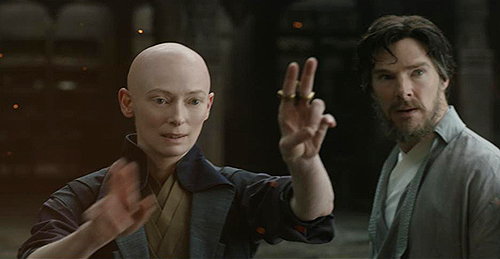
Whitewashing Wizardry – Pick a Card, any Race Card
With the casting of Tilda Swinton as the Ancient One, Doctor Strange was branded early on as guilty of whitewashing. In the original comics, the Ancient One was a native Tibetan, so having a white woman portray him in this film drew plenty of criticism, even if it was an Academy-award winning actress of the stature of Swinton. Asian actors are severely underserved in Hollywood, especially considering that Asians comprise about 60% of the world’s population. Only 5% of the U.S. population is Asian now, but that means that every 20th Hollywood acting role should be Asian to be representative, but most would be hard pressed to name a dozen Asian actors in Hollywood films this year especially if the Martial Arts genre is subtracted.
The filmmakers scrambled to defend Swinton stating that the original comic book character was a racial stereotype, a valid point given the atmosphere in 1963 and the Vietnam conflict. Marvel Studios deftly dodged a similar stereotype when they reimagined the villainous Mandarin in Iron Man 3. An underlying impetus behind Swinton’s race swap was likely to cater to the ever-growing Chinese film market, and given the political tension between China and Tibet, there is a reasonable economic motive for remaining politically correct with the Chicoms. The Ancient One’s Kamar-Taj sanctuary was filmed in Nepal instead of Tibet, a more PC choice for the PRC. Market forecasters predict the PRC might deliver over $100 million for Doctor Strange based on the performance of the previous Marvel franchise blockbusters, Iron Man 3 and The Avengers: Age of Ultron, and what studio exec wouldn’t gamble that swap? In the end, Doctor Strange successfully secure distribution rights for the PRC, and we’ll see if it pays out as well.
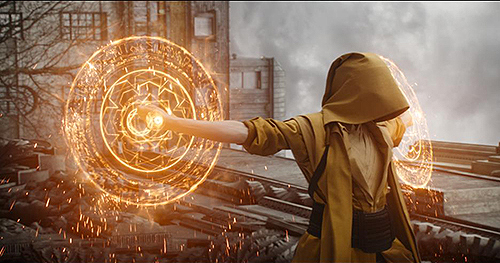
But why not just swap the Ancient One’s race to be Chinese? In this new Doctor Strange, the Ancient One is reimagined as a Celt. Ironically, Swinton and Director Scott Derrickson have defended this incarnation of the character on the grounds of diversity. Derrickson claims he wanted to recast the Ancient One as a female, and claimed if that role was given to an Asian actress, it would turn into too much of a ‘Dragon Lady.’ It’s a weak argument at best, akin to saying if the role was given to an African American actress, it would turn into too much of a ‘Mammy’ stereotype. However, Doctor Strange does give Kamar-Taj (the Ancient One's magical academy) a more international feel as the other two main residents there are Chiwetel Ejiofor as Mordo and another Benedict, Benedict Wong, as Wong. Swinton insists she was never cast for an Asian role, so actually it’s a far cry from Joel Grey’s notorious yellow-face portrayal of Chiun in Remo Williams (1985) or even worse, Mickey Rooney’s Mr. Yunioshi in Breakfast at Tiffany’s (1961). Would the Ancient One have been better served by some venerated Asian actor like James Hong? Or would it have fallen into the old Fu Manchu stereotype like the original comic book character? One thing is certain. It’s hard to fault Swinton’s performance in the diminutive yet super powerful grandmaster role. It’s not Master Yoda or Master Shifu, or even blind Master Po. Swinton’s Ancient One is a refreshingly brilliant interpretation of an ancient cliché. Ultimately, it’s about the actor and the story told, not the race, and Swinton delivers exactly the sort of brilliantly eccentric performances that she has built her remarkable career upon.
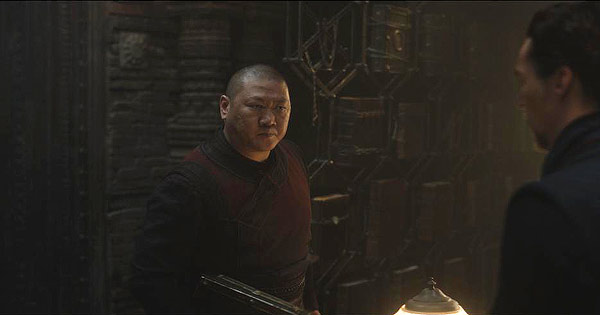
Some other notable pieces of Pop Culture released in 1963
January 1 - Osamu Tezuka's Tetsuwan Atomu (Astro Boy), Japan's first serialized animated series, debuts on Japanese television.
March 28 – Director Alfred Hitchcock's film The Birds is released in the United States.
April 1 – The soap opera General Hospital debuts on ABC Television.
May 8 – Dr. No, the first James Bond film, is shown in U.S. theaters.
June 12 - The film Cleopatra is released, starring a white Elizabeth Taylor.
July - Strange Tales issue #110 features the first appearance of Dr. Strange.
October 10 - The second James Bond film, From Russia with Love, opens in the UK.
November 23 - The first episode of the BBC television series Doctor Who is broadcast in the United Kingdom.
December 25 - Walt Disney releases his 18th feature-length animated motion picture The Sword in the Stone, about the boyhood of King Arthur.
Watch Me Pull a Rabbit Out of this Flower Vase
Haters are going to hate, but to those fervently waving the whitewashing banner, they need to know that they are stabbing their own in the back at the same time. Benedict Wong brings the same smoldering gravitas that he imbues into his groundbreaking performance as Kublai Khan in the Original Netflix Series Marco Polo. Often, Asian Hollywood film roles are just ‘flower vases’ nowadays – just decoration and of no consequence to the story – Oriental is only ornamental. Wong steals every scene he is in just like he did in The Martian (2015). At first, Wong echoes the growling ‘noble savage’ stereotype of the bodyguard/manservant Oddjob from Goldfinger (1964). But later, just as Bruce Lee took the subservient Kato to a whole other level, Wong becomes the most standout character after Strange and the Ancient One. Benedict Wong has already committed to continuing to play Wong in Avenger: Infinity War, slated for May 2018. Asian actors lost the role of the Ancient One, but gained the first significant recurring role in the big screen MCU with Wong.
With Doctor Strange poised to be more Marvel box-office magic, the whitewashing protests will likely come out in the wash. This isn’t because the accusation lacks merit, but there is some redemption in Wong. When it comes to Wong’s work in this film versus whitewashing condemnations, remember Thomas Carlyle’s 1853 denouncement of slavery Occasional Discourse on the N****r Question: “The Germans say, “you must empty-out the bathing-tub, but not the baby along with it.” Fling-out your dirty water with all zeal, and set it careering down the kennels; but try if you can to keep the little child!” Benedict Wong is clearly an Asian actor on the rise, and it would be a hypocritical shame to boycott his performance here on the grounds whitewashing.
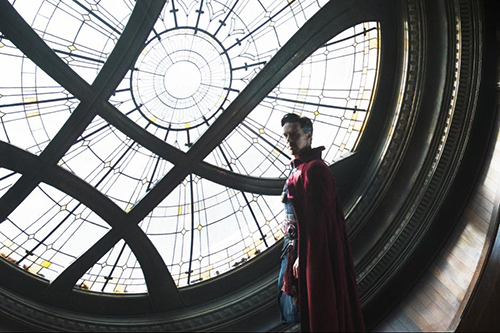
About
Patrick Lugo and Gene Ching :
![]() Patrick Lugo is Senior Designer at Kung Fu Tai Chi Magazine and illustrator of the award winning
Little Monk & the Mantis. Find more of his art & comics at PLUGOarts.com.
Patrick Lugo is Senior Designer at Kung Fu Tai Chi Magazine and illustrator of the award winning
Little Monk & the Mantis. Find more of his art & comics at PLUGOarts.com.
Gene Ching is the Associate Publisher of Kung Fu Tai Chi Magazine and KungFuMagazine.com.
![]() Print Friendly Version of This Article
Print Friendly Version of This Article
















